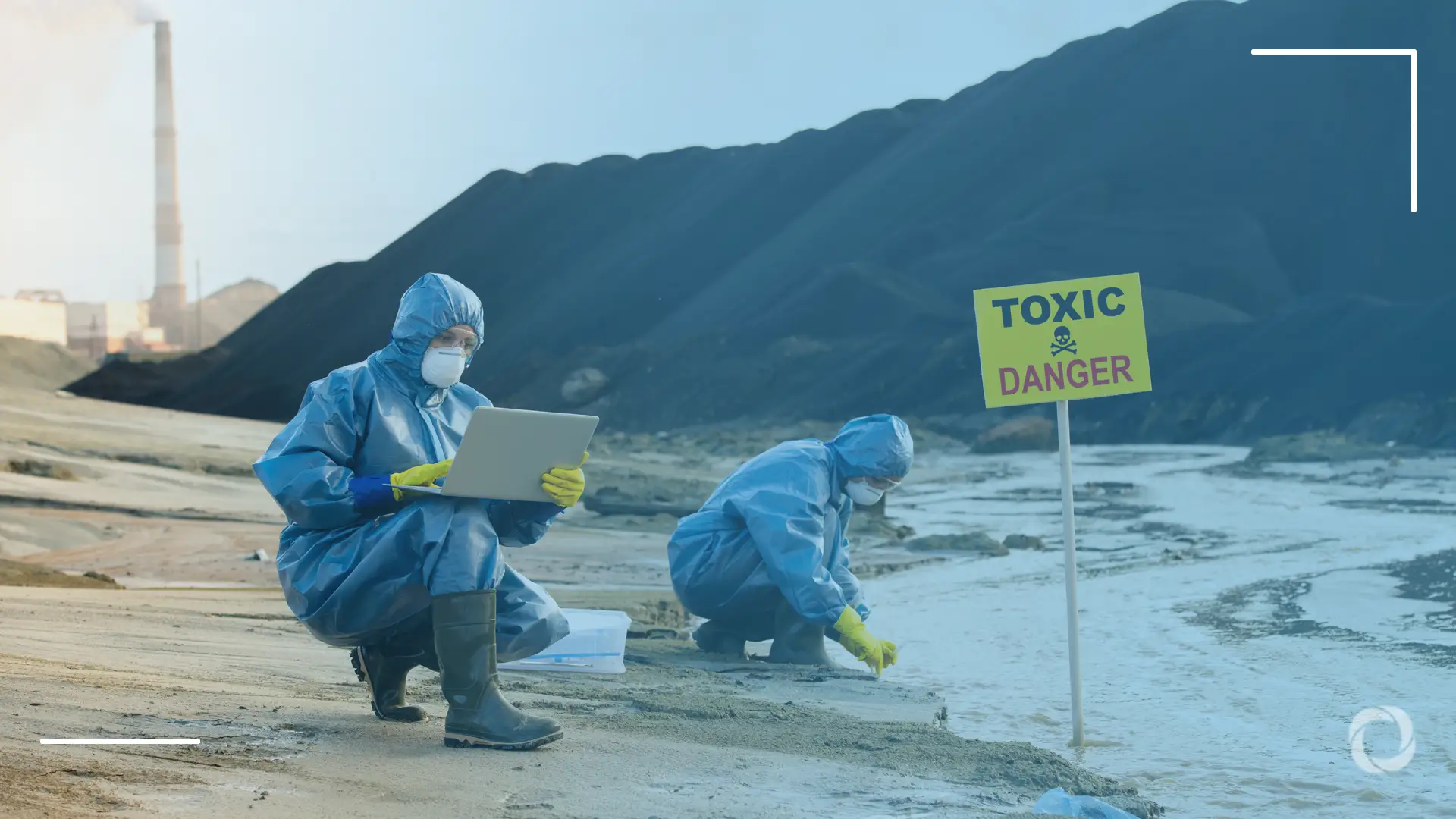Almost 1.4 million tons of chemical waste were released in the United States in 2024, causing considerable damage to the country’s environment. This alarming statistic raises questions about the management of chemical waste and also highlights the need for improvements in policy and monitoring. Contaminated land, air, and water, as well as biodiversity loss, and public health issues are some of the most significant threats caused by hazardous chemical waste being released into the environment.
How do the U.S. authorities monitor and address the issue of chemical waste? Which U.S. agencies are responsible for tackling this issue, and what policies and programs are currently being implemented? The answers to these and other questions concerning the management of chemical waste in the United States are revealed in this DevelopmentAid article.
What is chemical waste?
According to the United States Environmental Protection Agency (EPA), chemical waste is the result of excess chemical substances that harm human health or the environment when released into water, air or land or removed off site for disposal.
Most hazardous substances are regulated under the Comprehensive Environmental Response, Compensation, and Liability Act (CERCLA), also called the Superfund, and the Per- and Polyfluoroalkyl Substances (PFAS) Action Plan. The Superfund identifies substances that must be cleaned up when released into the environment, while the PFAS plan targets synthetic chemicals that resist degradation. These regulatory frameworks inform how hazardous substances are identified, managed, and disposed of across the U.S.
How much chemical waste is released in the United States?
Hazardous chemical waste released into the U.S. environment shows fluctuating patterns, surging in some years while falling in others. These fluctuations can be attributed to changing industrial practices and regulatory enforcement by the authorities.
See also: U.S. nuclear renaissance meets a 40-year waste management crisis
Not all the chemical waste generated is released into the environment as a major share of this is recycled. The amount of toxic substances identified by the CERCLA regulation that were managed through recycling increased from approximately 6.4 million tons in 2020 to almost 9.1 million tons in 2023 (Figure 1). This increase means that more petrochemical industries are treating and reusing their chemical waste rather than disposing of it into the environment.
However, the management of hazardous substances through energy recovery, treatment, and disposal decreased between 2020 and 2023. Management through treatment decreased from 2.6 million tons in 2020 to 2.5 million tons in 2023.
Figure 1: Statistics of CERCLA hazardous chemical waste managed from 2014 to 2023
Source: TRI 2023 Factsheet for CERCLA Hazardous Chemical Group
According to Toxics Release Inventory data, the release of toxic chemicals remained stable between 2020 and 2023, ranging from approximately 1.3 million tons to 1.4 million tons (Figure 2).
Figure 2: Hazardous chemical waste released based on the comprehensive environmental response, compensation, and liability act (CERCLA) in 2014-2023
Source: Toxics Release Inventory (TRI) 2023 Factsheet
Impact of irresponsible chemical waste management
Irresponsible chemical waste management has caused serious environmental damage, toxic leaks, and the discharge of biohazards that destroy ecosystems and damage public health. Due to improper storage, transportation, and disposal, these substances pollute water, air, and the soil, and can even lead to the loss of human life.
One accident involving chemical waste was the Norfolk Southern freight train ferrying hazardous chemicals that derailed and exploded in East Palestine, Ohio, on February 3, 2023, causing the emission of hydrogen chloride and phosgene gases into the environment. East Palestine residents reported respiratory issues, headaches, and increased stress levels, raising public health concerns.
The 2019 explosion of the Texas Petrochemical Company (TPC) and the 2024 Deer Park hydrogen sulfide leak in Houston, Texas, evidence the impact of poor chemical waste management. The after effects of the explosion are still causing respiratory diseases and trauma due to the toxic gases emitted, and the leak led to the death of at least two employees at the plant.
The U.S. government and industry players are incurring financial losses as a result of having to pay compensation to victims, and meeting clean-up costs, and legal fees. For example, the Norfolk Southern train derailment led to the company paying US$600 million to settle a lawsuit, while TPC paid at least US$30 million in civil penalties and spent almost US$80 million on improving risk management initiatives and safety procedures following the 2019 explosion.
Chemical waste management programs in the United States
The Cradle-to-Grave Chemical Waste Management Program, an initiative managed by the EPA, monitors hazardous chemical waste from its production, transportation, and treatment to its final disposal. The program aims to ensure that hazardous waste is effectively handled and managed during its lifecycle.
The Superfund Program is the initiative responsible for cleaning the nation’s highly contaminated lands and responding to oil spills and environmental emergencies. It addresses the restoration of the nation’s most polluted settings, particularly where chemical waste has caused environmental harm.
The bottom line
The comprehensive implementation of chemical waste administration policies is important to ensure the responsible management of hazardous materials. Without effective enforcement, the risks to human health and the environment could escalate. Strengthening the EPA’s monitoring systems will improve sustainable practices and protect communities.

